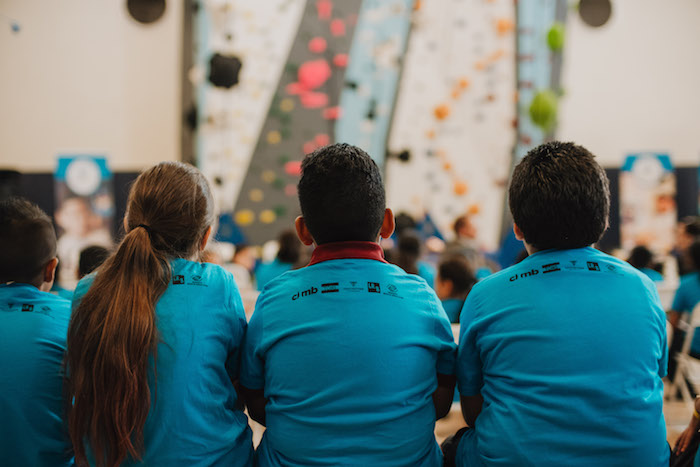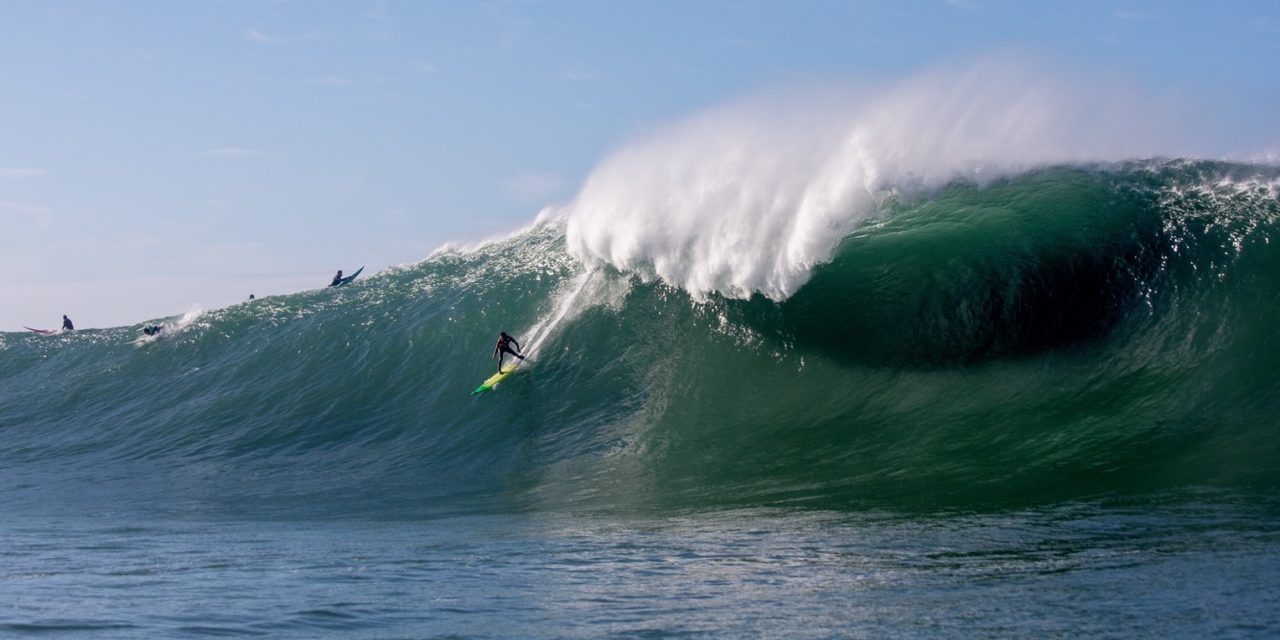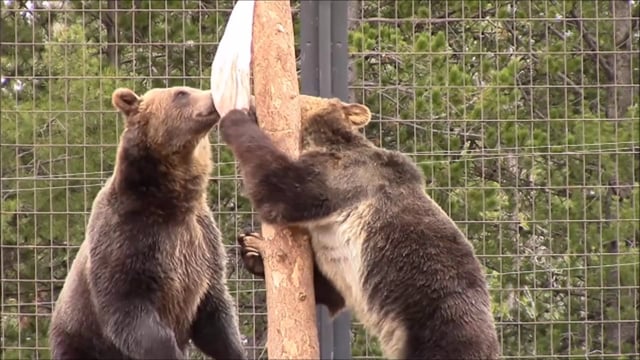Six tips for surfing in Hawaii this winter
By Krista Houghton
Every surfer knows late fall marks the beginning of the real surf season. The winter swell window is open, and the big waves are coming. Winter means waves, but it also means cold. In Northern California where I learned to surf, that means bone-chilling cold. With water temps in the low 50s, even a 5/4/3 suit, booties, hoodie and gloves couldn’t keep the cold from creeping in, resulting in what we call “the claw”: hands so cold you’re not able to grip your board rails or even effectively paddle. You’re like a stiff Gumby trying to surf. Oh yes, I know cold water.
When I was younger, I would proudly say, “I shall never wimp out to cold water.” Ha, I wasn’t prepared for my 40s. Something shifted, and cold water and I no longer agree. Now, it can take my hands hours to recover to full function after a surf session. Sure, I’ll stuff myself into my wetsuit in the summer and fall, when it’s sunny and daytime highs are 80 degrees in Santa Cruz, up the coast, or at Pleasure Point. But those days of dawn patrol at Scott’s Creek in January, when the buoy is 10 feet 17 seconds – well, now I pull the puss card. Yes, the “I don’t do winter cold water” card. I’m off to Hawaii.
Hawaii, the stuff of surfing dreams. It’s for real too, not some artificially enhanced commercial. Hawaii is always naturally in technicolor. The water turquoise blue, the mountains every shade of green, the sweet scent of plumeria in the air. And the waves are like nowhere else. Every kind of wave, from sandy beach breaks, to huge barrels over the reef – and all of them are in warm, rarely below 80-degree water! So, book your tickets and pack your bags. Here’s the inside scoop on how to satisfy your warm water dreams in Hawaii.
I moved to Kauai full time in 2015. It was hands down the best decision I ever made. It’s where I truly found my surfing stoke and learned to relax. The waves will come to those being patient. The saying “slow yourself down” is taken seriously in Hawaii, see rule #1.
1. Go slow! Drive slow, act slow, eat slow, even surf slow: I see it all the time, and I was guilty on a few visits before moving here. Don’t be bringing your 9-5, fast driving, gotta-get-a-million-things-done to the islands. This is the land of slow. If there are ten things or places you want to see or surf, pick five and concentrate on the quality of the experience, not the amount you can cram in. For surfing this specifically means rolling up to a break slow. Take it in, watch the lineup, stretch in the warm air, pick up some trash or share some bananas. Be a good contributing part to the beach, not just a tourist who waxes up their board and jumps in the water without so much as a reflection on how sacred this land and the sport of surfing is to Hawaii. Surfing was born in Hawaii and every time before I surf, I slow myself down and take a moment to give gratitude for the privilege of surfing.
2. Be Aloha: Ask any local bruddah – if you come with entitlement, thinking you deserve some Hawaiian waves because you paid for your trip out here or are some hotshot back home – guess again. The island has a saying: “Either it takes you in or spits you out.” All that truly depends on your attitude. Localism is very present in Hawaii, but it comes from a place of respect. If you come with respect for the land, the ocean, the culture, the lineup – doors will open, waves will come to you. But if you come with a sense of entitlement, that you expect or even worse, deserve waves; doors will close, no waves for you. So always approach your Hawaiian day with an attitude of Aloha. Aloha is not just a greeting in Hawaii, it embodies an attitude of love, respect, affection, peace, compassion and mercy. Aloha is a good mindset not just for
Hawaii, but for society. So, be Aloha.
3. Maybe don’t bring your own stick: If I could turn back t the clock and change things, this would be one of those moments. My first visit to Kauai, I brought my quiver –three boards to handle all elements. I was sponsored, 29 years old, all that and a bag of chips. I unzipped my new travel bag, slid out each bright colored, logo embossed board onto the beach, right there at the Hanalei Pier. Snapping my fins in, waxing them up, and all with my white haole ass in a bikini. What a kook move! I was announcing for all the locals to see, “that girl don’t live here, she don’t belong here, and she don’t surf here.” My advice is to avoid a dog and pony show, rent a local board. The surf shops in Hawaii are full of good locally shaped boards, meant to be ridden in local conditions. Having a nicely worn in local board will get you waves and save you the hassle and expense of traveling with a board.
4. What to wear: Yes, the surf magazines show girls surfing in bikinis. But it’s not easy. I have tried it and often end up putting on a free “show.” Surfing in a bikini in waves of decent size means getting worked on the inside while you try frantically to adjust your bottoms back into place. One memorable time, if it wasn’t for my surf leash, I would have lost my bottoms completely, as they were all the way down past my ankle dangling around my leash. Sure, give it a try but the suit of choice for comfort and style is the long sleeve one piece. One piece means no bare buns in the lineup! For winter, a 1mm is very nice as the water temps hover around 78 degrees. Guys, board shorts and a good long sleeve rash guard or 1mm surf vest are excellent. Colors are nice, but to avoid standing out in the lineup – black is best.
5. Use reef safe sunblock: Thankfully, in 2018 Hawaii passed S.B. 2571 (aka the “Reef-Safe Sunscreen” law) to protect the delicate reef ecosystems of Hawaii. The law bans the sale of sunscreen products that contain the chemicals Oxybenzone and Octinoxate in the state of Hawaii. It is convenient to pack your own tube of sunblock, as many coming to the island do, but make sure it is reef safe. The locals are watching and enforcing, as they have seen the toxic oil-like slick that lays on the ocean surface when hundreds of tourists every day flock to the beaches. Think about it, that’s literally gallons of sunscreen washed off into the ocean daily. Choose and use your sunblock wisely. The island is home to dozens of locally made, effective sunblock products. Support the local economy and pick up a tube when you rent your local board. The ocean will thank you!
6. It’s not all about surfing: Yes, your main reason for traveling to Hawaii is to surf, but don’t forget the islands have a lot more to offer than just surfing. Go to a farmers market, tour a botanical garden, take a hike to a waterfall, or go on a boat trip. The islands are an amazing place, full of wonderful people, places and culture. Learning about the history of the islands and exposing yourself to new experiences will enrich your stay. You will take home many more great memories than just the waves you caught.















5